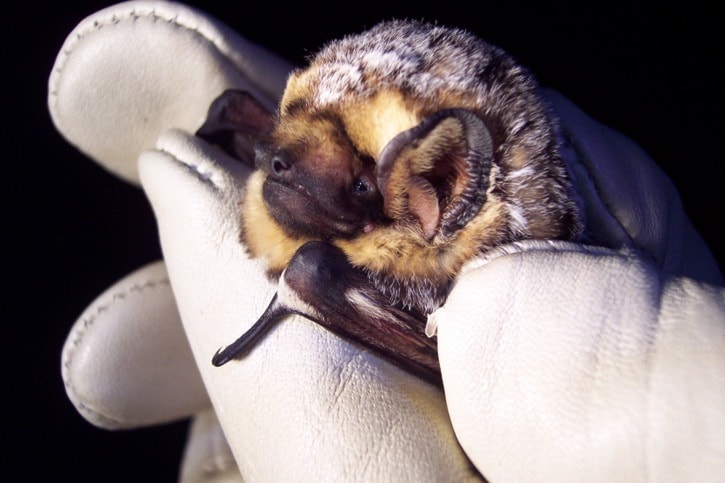Some of the lesser-known inhabitants of the Clayton Valley watershed will be in the spotlight this July, when biologists Helen Davis (Artemis Wildlife) and Mandy Kellner (Kingbird Biological) conduct surveys for these elusive creatures, in a project funded by the Fish and Wildlife Compensation Program - Coastal. Goshawks, large forest-dwelling birds of prey, live in low densities across Eurasia and North America. They require mature and old forests for catching food and nesting, and to-date, it is unknown if they are present or breed in the Clayton River Valley. However, goshawks are known to occur and breed in other parts of the Bella Coola Valley, so may be present in this neighbouring watershed. Surveys in the types of habitats generally used by the birds will shed light on their local distribution.
As many as nine species of bats are potentially present in the Clayton River Valley area, ranging from the more common Little Brown Bat (Myotis lucifugus) to the rare Keen’s Myotis (Myotis keenii), a species found only along the west coast of British Columbia and southeast Alaska. Our knowledge of bats is limited because they are active at night, they fly, and humans cannot hear the majority of sounds they make. However, we do know that they are invaluable members of the forest ecosystem, eating more than their weight in insects (such as mosquitos!) every night.
We also know that bat populations face many threats, including the alarming spread of White Nose Syndrome, a fungal disease that has already decimated bat population in Eastern Canada. The first step to protecting our bats is to determine which species are actually present, conduct research into habitat use, and identify habitats such as roosting areas or that are critical to survival. Also vital are programs that increase public knowledge about bats and develop local stewardship programs around bats and their habitats.
To this end, we would like to invite any interested people to come out to a public mist-netting night to learn about bats, bat research, and our findings so far. If we are lucky, we will catch some bats and have a chance to see them up close. Weather-permitting (no rain), this event will take place on Saturday, July the 25th, at 9 pm at the BC Hydro Clayton Falls Recreation Site. Participants will need to be prepared for buggy weather, and should have a flashlight or headlamp. Please contact: Helen Davis, Artemis Wildlife Consultants at hdavis@artemiswildlife.com or 250-388-5515.
